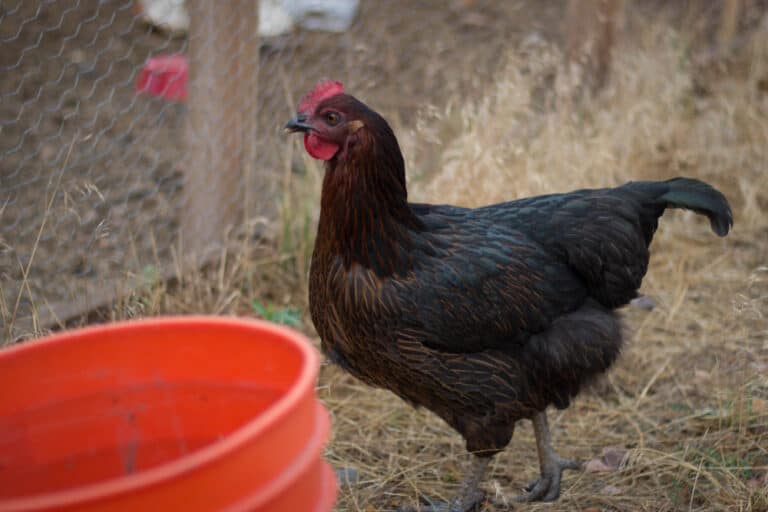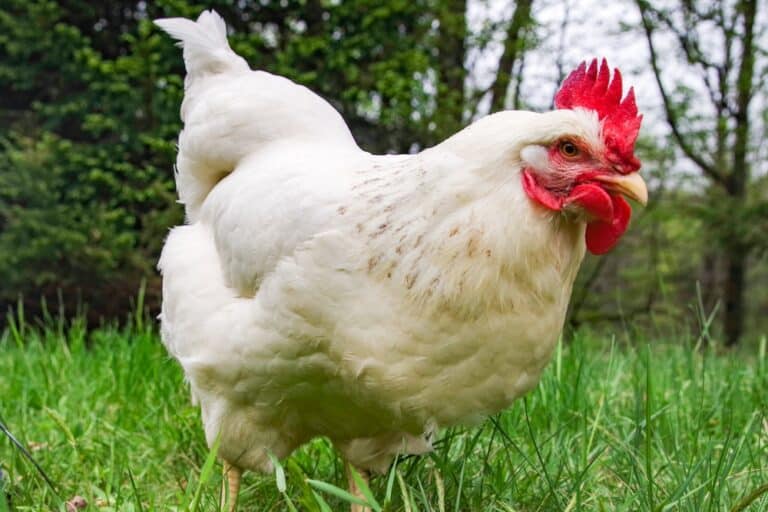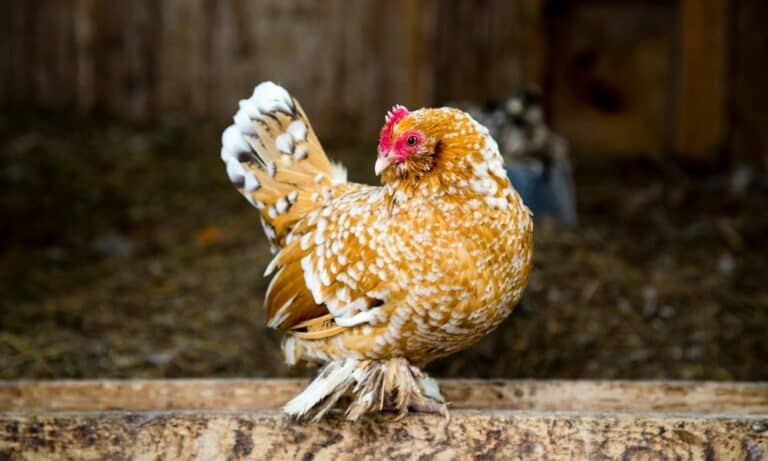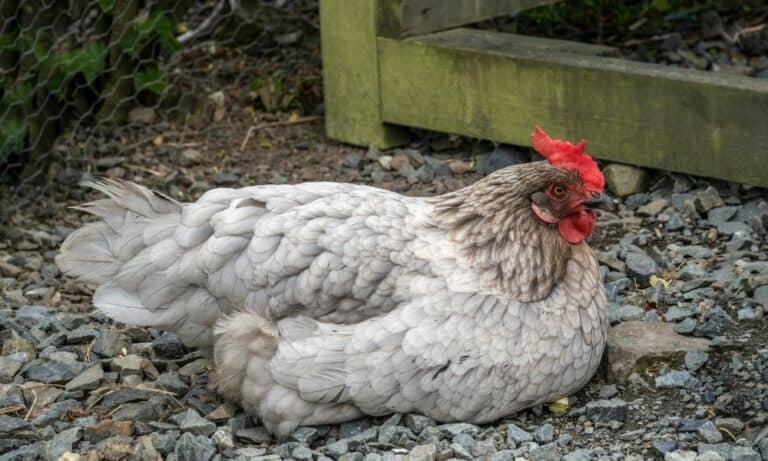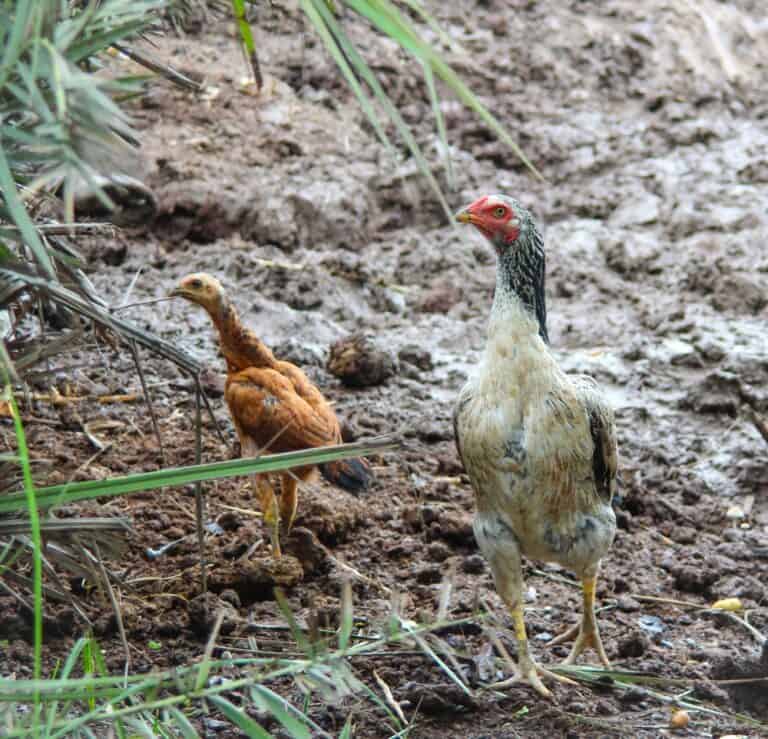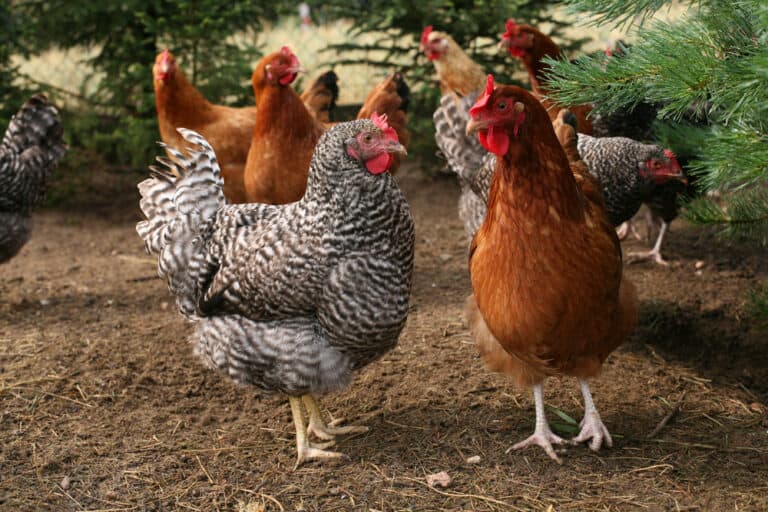Jubilee Orpington is a breed of exquisite chicken that has become increasingly popular in the US in the last decade. Although this chicken variety has been present in Britain since the late 1800s, it was first imported into the US around 2011.
Since then, it has stolen the show due to its docile nature but also charming appearance. More and more people are becoming interested in these rare species, which are kept as pets and poultry.
If you saw one of these and they grabbed your attention, prompting you to consider keeping a pair of these lovely chickens, please keep reading!
What is the History of Jubilee Orpington?
Before we dive into care tips, appearance, and temperament, let’s check out the history of Jubilee Orpington chickens. As mentioned, the breed originated in Great Britain and was developed by William Cook, who introduced the chicken variety in 1897.
They were given the name Orpington after the town of the same name, located in Kent, in southeast England. Seeing the success, public interest, and potential for breeding these chickens, Cook continued experimenting and diversifying its color varieties.
The breed was initially given the name Diamond Jubilee Orpingtons as an homage to the celebration of Queen Victoria’s Diamond Jubilee on the throne, the 60th anniversary of her accession.
The Queen was gifted with a flock of these wonderful Jubilee Orpington chickens during the celebration. There are different theories about the varieties that were crossbred to develop this chicken breed. Some suggest that Orpington is a crossbreed of Minorca and Black Plymouth Rock.
On the other hand, the more plausible theory is that Cook crossbred Buff Orpington and a Spangled Old English Game chicken. Then, the offspring were bred with Langshan chickens, which are large and tall birds.
It is believed that Crook wanted to develop a variety of chicken with dual-use, in terms of their egg production and meat.
If you are familiar with chicken breeds, you can notice an obvious similarity of speckles or patterns found on Jubile Oprington’s feathers and Speckled Sussex, a dual-purpose variety as well.
Interestingly, Speckled Sussex has a wonderful coloration and a color range of eight colors. Therefore, some speculation arose that there is a possibility that this particular breed was mixed with Buff Orpington and Spangled Old English Game chicken.
Jubilee Orpington Appearance and Characteristics
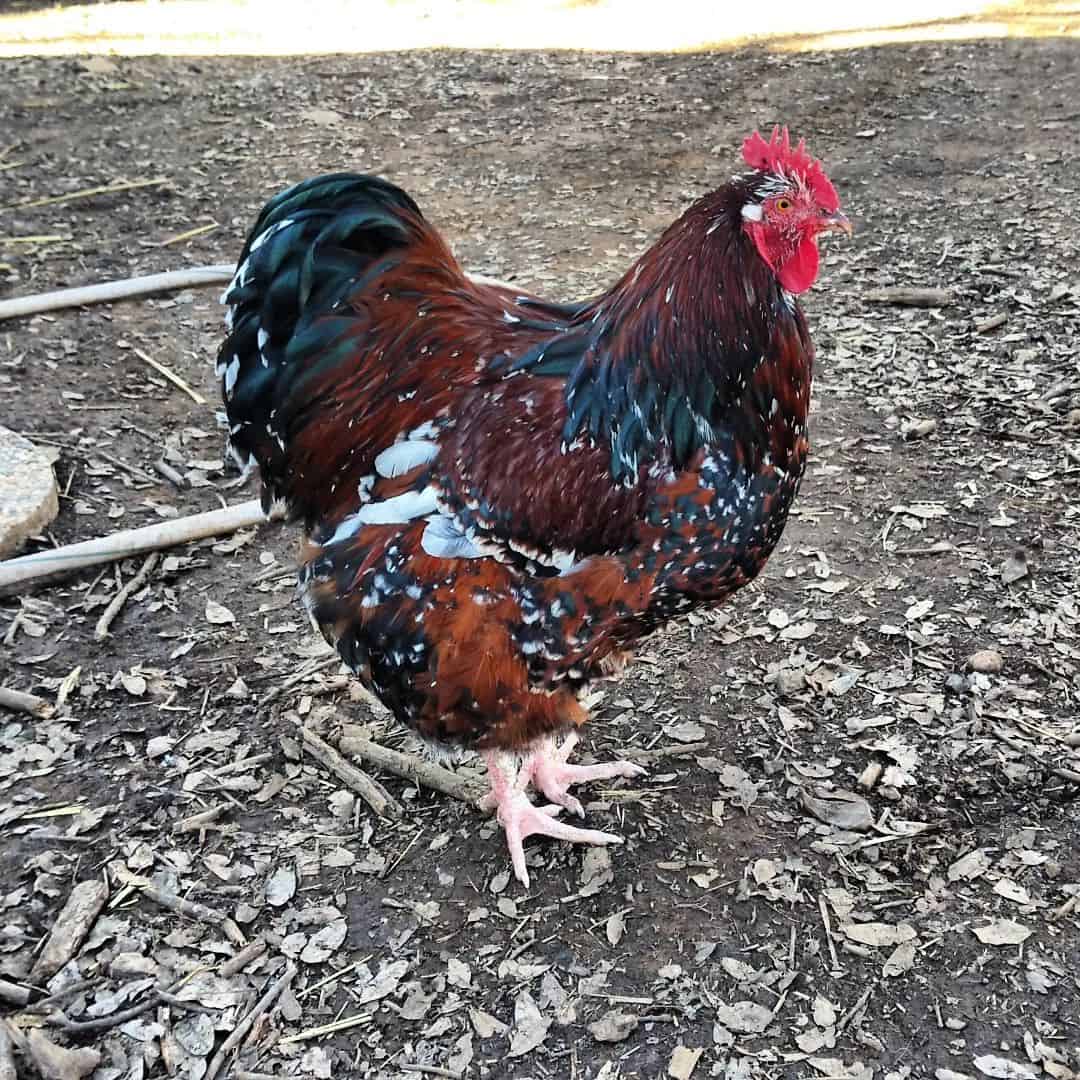
Jubilee Orpington chickens are a large variety, and interestingly, they are one of the largest breeds, which is logical considering the size of the mixed Orpington chicken.
The Jubilee Oprington chickens, just like Oprington chickens, have big, fluffy, full bodies and buttocks. However, this variety is special because of the feather color pattern, which is complex compared to some other breeds.
Feather Pattern
Their feathers are a combination of rich mahogany color and dark brown color with white speckles.
It takes around 16 to 18 months for the young Jubilee Opringtons to develop this complex feather pattern.
Each of their feathers has white tips and is separated from the mahogany ground feathers by a black bar, giving emerald and iridescent gloss. Over the years, their feathers change and tend to get more vibrant and pronounced.
Similarly to other chicken breeds, the wattles, comb, and earlobes are red, while their comb is of a single variety. If you want to learn more about chicken combs and their appearance, click here.
On the other hand, Jubilee Orpington chickens’ feet, beaks, and legs are white-colored. Their legs are short and covered with dense, fluffy feathering, mainly on their muscular thighs and butt.
Weight / Size
As noted, they are large in size, and combined with their fluffy feathering, they tend to appear even bigger than they actually are.
Male Jubilee Orpingtons (roosters) generally weigh around 3.6 kg to 4.5 kg or 8 lbs to 10.5 lbs, while hens or females are slightly smaller and weigh less, around 2.7 kg to 3.6 kg or 5.95 lbs –7.94 lbs.
Other Traits and Characteristics
If you plan to keep these chickens for their egg production and meat, there is some vital information that you need to know. Their eggs are light brown or brownish and very large. A single Jubilee Orpington can produce around 150 to 160 eggs annually.
However, remember that they may not lay eggs before reaching six months of age or 24 weeks.
They reach maturity at 24 weeks, while their average life span is around 5 to 10 years. Their life span, egg production, and meat quality depend on their living conditions and diet.
As you already know, chickens can be in very sensitive and stressful environments; poor diet, light, and molt will most likely affect their behavior and egg production.
Due to their size, they cannot fly, and interestingly, they are not very loud. Although this chicken variety is attractive due to its numerous characteristics, one issue may be problematic for chicken keepers.
That issue is broodiness, and Jubilee Orpington chickens often go broody.
What is Jubilee Orpington Character/Temperament?
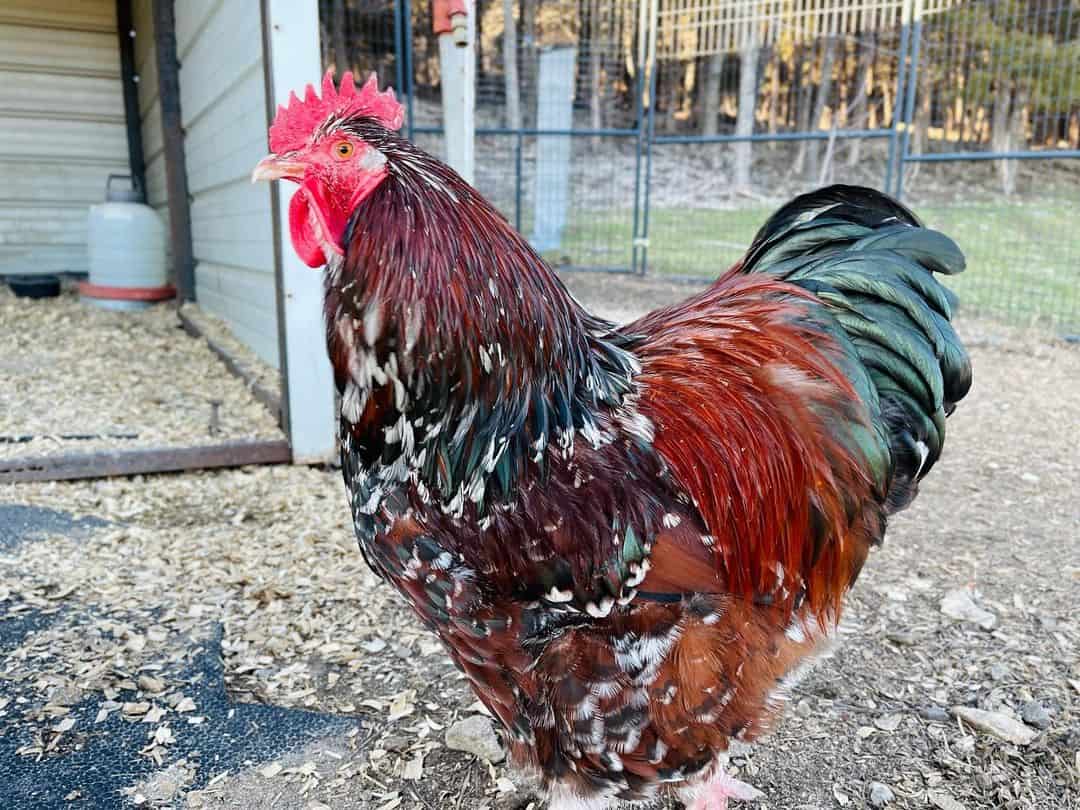
Jubilee Orpington is a very friendly bird suitable for beginners or those new to chicken keeping. They are often referred to as “lap chickens.”
Ironically, although these birds are intimidating in size, due to their loving nature, they are often bullied and attacked by aggressive chicken varieties.
Therefore, do not mix Jubilee Orpington with other dangerous chicken breeds, such as Brahma or Cornish chickens. Here is a list of aggressive chicken varieties.
On the other hand, they get along great with other chicken breeds and pets because they rarely fight and are amicable. However, their behavior might change if they are kept in a confined space longer.
Having enough space in their coop and free-range space is vital to their health and general well-being and will reduce tension, preventing them from being aggressive and starting to peck each other.
Do not let their size fool you; they also need protection from predators, so ensure your coop is predator-proof and monitor them in their run space.
Which Environment is Best For Jubilee Orpington?
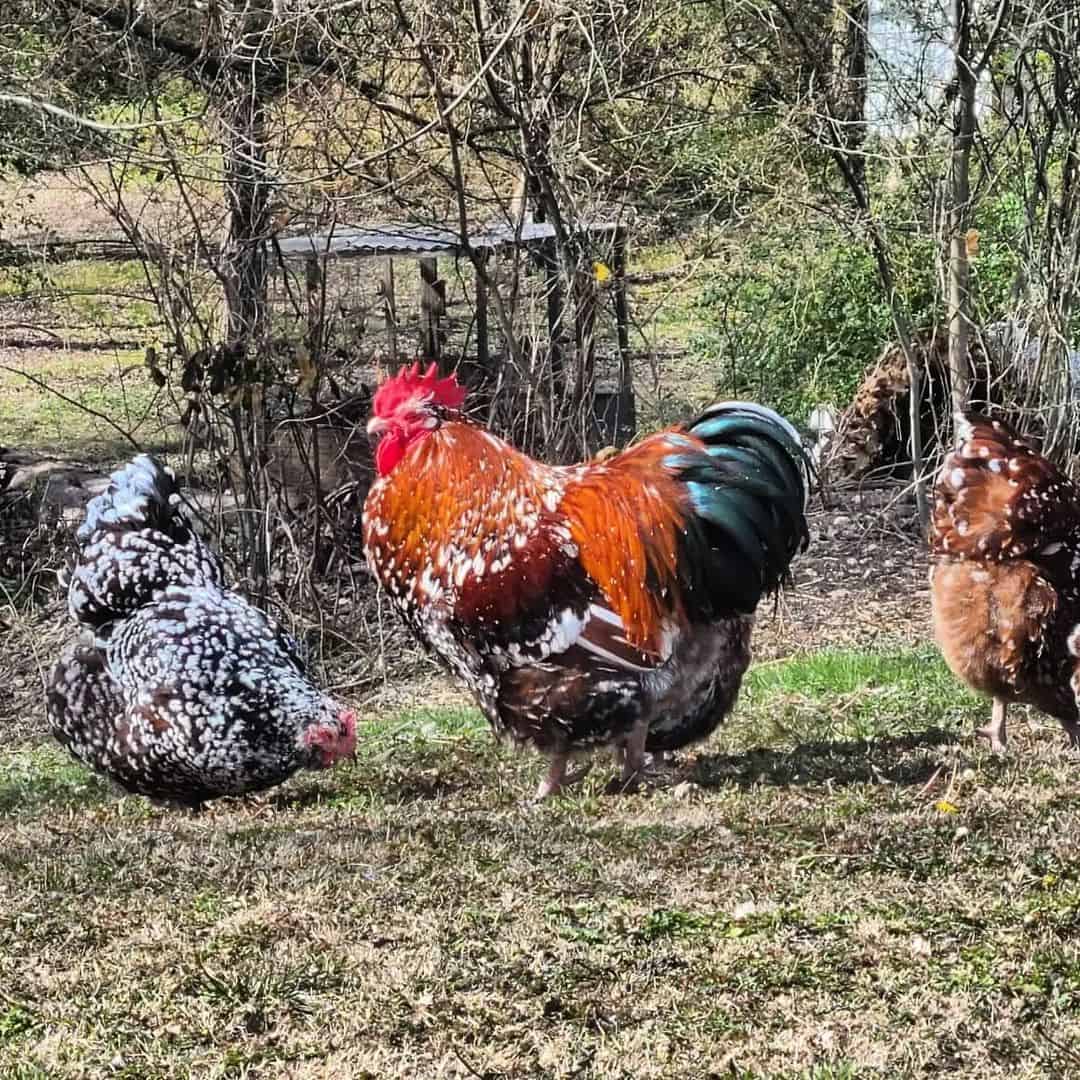
Considering that Jubilee Orpington has fluffy and densely feathered bodies, they can live in colder environments. However, prolonged exposure to very low temperatures can be detrimental to their health.
On the other hand, they are not very heat tolerant. During the summer or hotter months, it is vital that they have plenty of cool water but also shade to protect them from sun exposure.
Since they do not tolerate high temperatures well, they can easily suffer from a heat stroke, so watch out!
Common Health Problems
Jubilee Orpington chickens are pretty robust, hardy, and disease-resistant birds. However, they are susceptible to lice due to their fluffy and dense feathering, and also mites, which commonly attack chickens.
In order to avoid such problems, we suggest you regularly check on their feathers and plumage.
These birds are considered lazy and tend to spend their day sitting near the feeder all day, making them prone to obesity, so make sure that they are not over-eating.
Is Jubilee Orpington Rare In the US?
Yes! This chicken breed is relatively rare because it was introduced to the market during the last decade. However, they are not rare in Great Britain. These fluffy chickens are becoming very popular due to their appearance, size, and character.
They are very docile, personable, and calm, so it is not surprising that some people like to keep them as pets! In addition to their wonderful coloring, they have these adorable fluffy butts, which many consider charming.
Does Jubilee Orpington Need A Lot of Care?
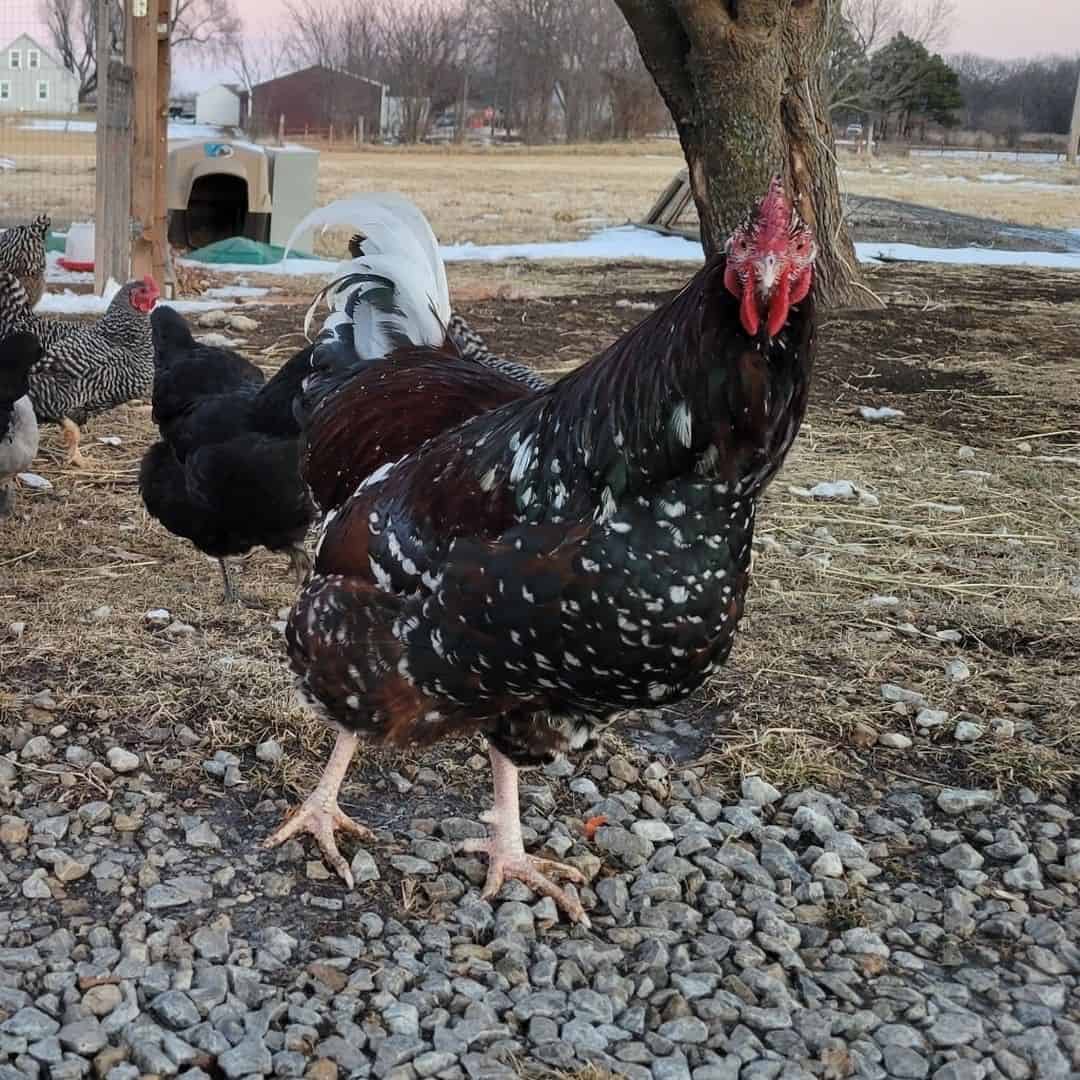
Considering that it is a big-sized chicken having plenty of space in their coop and their run space is of paramount importance. Depending on the size of your flock, they usually need around 4 square feet of coop per bird.
If you have a mixed flock, it would be best to ensure a minimum of 6 feet of coop per bird. Perches and nesting boxes are also recommended because chickens generally love sitting or resting on higher places and stretching their wings.
They are not foragers; if nothing, they are considered sluggish.
Like other chicken breeds, you must provide them with a healthy diet and lots of protein, vegetables, grains, and fruits. When it comes to their diet, the key takeaway is moderation.
Their diet should consist of 90% high-quality feed and 10% treats and snacks, which include a variety of leafy greens, fruits, and veggies.
Conclusion
Jubilee Orpington is a dual-purpose chicken with mahogany ground-colored feathers and white specks.
Those with a passion for chicken breeding are especially fascinated with this breed for several reasons, including their mild temperament, making them excellent companions of people. In addition, they are very prolific egg layers.
In this article, we have covered the history of Jubilee Orpington, their appearance, traits, characteristics, behavior, common health problems, and frequently asked questions!
Have you ever kept this chicken breed or had the opportunity to see them? Please share your experience with us! If you have any questions and need some advice, please reach out!

